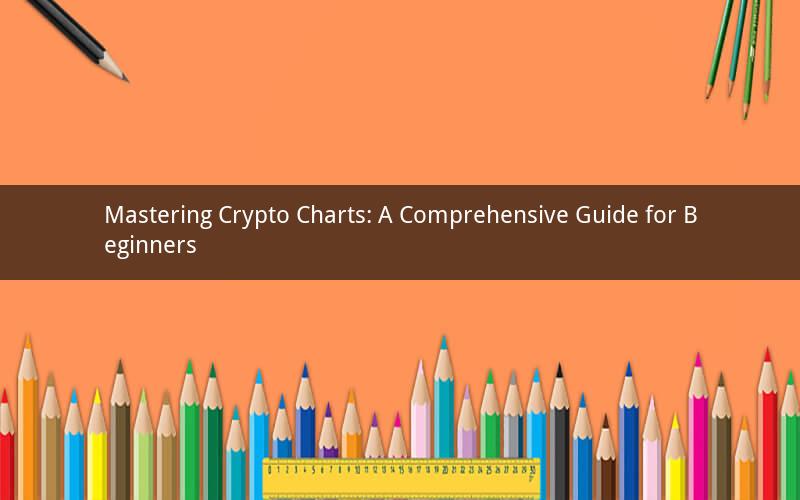
Introduction:
Understanding how to read crypto charts is crucial for anyone looking to navigate the volatile world of cryptocurrencies. Whether you're a seasoned investor or a beginner, this guide will provide you with the essential knowledge to interpret crypto charts like a pro. So, let's dive in and explore the fascinating world of crypto charts for dummies.
Section 1: Understanding the Basics of Crypto Charts
1.1 What are Crypto Charts?
Crypto charts are visual representations of the price movements of cryptocurrencies over a specific period. They provide traders and investors with valuable insights into the market trends and potential opportunities.
1.2 Types of Crypto Charts
There are two main types of crypto charts: line charts and candlestick charts. Line charts display the closing prices of a cryptocurrency, while candlestick charts provide more detailed information about opening, closing, high, and low prices.
1.3 Time Frames
Crypto charts can be categorized into different time frames, such as 1-minute, 5-minute, 15-minute, 30-minute, 1-hour, 4-hour, 1-day, 1-week, and 1-month. The choice of time frame depends on your trading style and strategy.
Section 2: Interpreting Crypto Charts
2.1 Price Patterns
Identifying price patterns is essential for predicting future market movements. Common price patterns include head and shoulders, triangles, flags, and wedges. Familiarize yourself with these patterns to make informed trading decisions.
2.2 Volume Analysis
Volume is a critical indicator that shows the number of units traded over a specific period. By analyzing volume, you can determine whether a price movement is driven by strong buying or selling pressure.
2.3 Moving Averages
Moving averages (MAs) are used to smooth out price data and identify the trend direction. There are various types of MAs, such as simple moving averages (SMA) and exponential moving averages (EMA). Understanding how to use MAs can help you identify potential entry and exit points.
2.4 Support and Resistance
Support and resistance levels are price levels where a cryptocurrency is likely to reverse its direction. Traders use these levels to identify potential buying or selling opportunities.
Section 3: Advanced Techniques for Reading Crypto Charts
3.1 Fibonacci Retracement
Fibonacci retracement is a popular tool used to identify potential reversal levels based on Fibonacci ratios. By drawing Fibonacci lines on a chart, you can predict where the price might retrace before continuing in the original direction.
3.2 Bollinger Bands
Bollinger Bands consist of a middle band (SMA) and two outer bands (standard deviations). They help traders identify overbought or oversold conditions and potential reversal points.
3.3 RSI (Relative Strength Index)
The RSI is a momentum oscillator that measures the speed and change of price movements. It ranges from 0 to 100 and is used to identify overbought or oversold conditions in the market.
Section 4: Tips for Successful Crypto Chart Analysis
4.1 Practice Makes Perfect
Reading crypto charts is a skill that requires practice. Spend time analyzing charts, and don't be afraid to experiment with different indicators and strategies.
4.2 Stay Informed
Keep up with the latest news and developments in the crypto market. This will help you understand the factors that drive price movements and make more informed decisions.
4.3 Risk Management
Always use proper risk management techniques, such as setting stop-loss orders and diversifying your portfolio. This will help protect your investments and minimize potential losses.
4.4 Stay Disciplined
Discipline is key to successful trading. Stick to your trading plan and avoid making impulsive decisions based on emotions.
Section 5: Frequently Asked Questions (FAQs)
Q1: What is the best time frame for crypto chart analysis?
A1: The best time frame depends on your trading style and strategy. For short-term traders, 1-minute to 15-minute charts are suitable, while long-term investors may prefer 1-hour to 1-month charts.
Q2: How can I identify a strong trend in crypto charts?
A2: Look for a consistent upward or downward movement, supported by strong volume and confirmed by indicators like moving averages and Fibonacci retracement.
Q3: What is the significance of volume in crypto charts?
A3: Volume indicates the level of interest in a cryptocurrency. High volume suggests strong buying or selling pressure, while low volume may indicate a lack of interest or indecision in the market.
Q4: How can I use Fibonacci retracement to predict price movements?
A4: Draw Fibonacci lines from a significant high or low point on the chart. Look for potential reversal levels where the price retraces to 61.8%, 78.6%, or 100% of the previous move.
Q5: What is the role of moving averages in crypto chart analysis?
A5: Moving averages help identify the trend direction and potential entry and exit points. They can also be used to confirm support and resistance levels.
Conclusion:
Reading crypto charts is a vital skill for anyone looking to succeed in the cryptocurrency market. By understanding the basics, interpreting price patterns, and utilizing advanced techniques, you can make informed trading decisions and increase your chances of success. Remember to practice, stay informed, and manage your risks effectively. Happy trading!